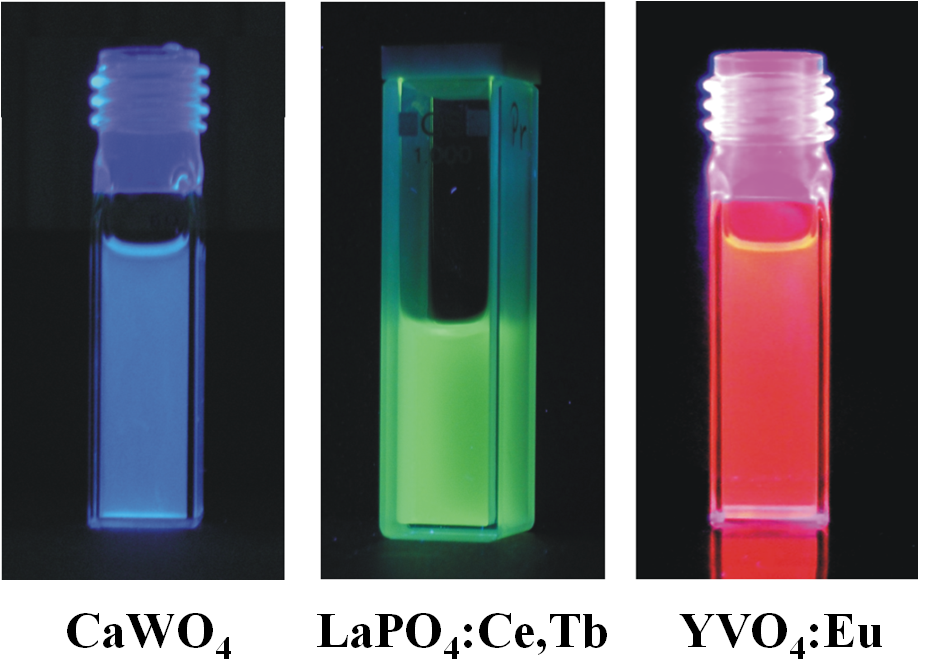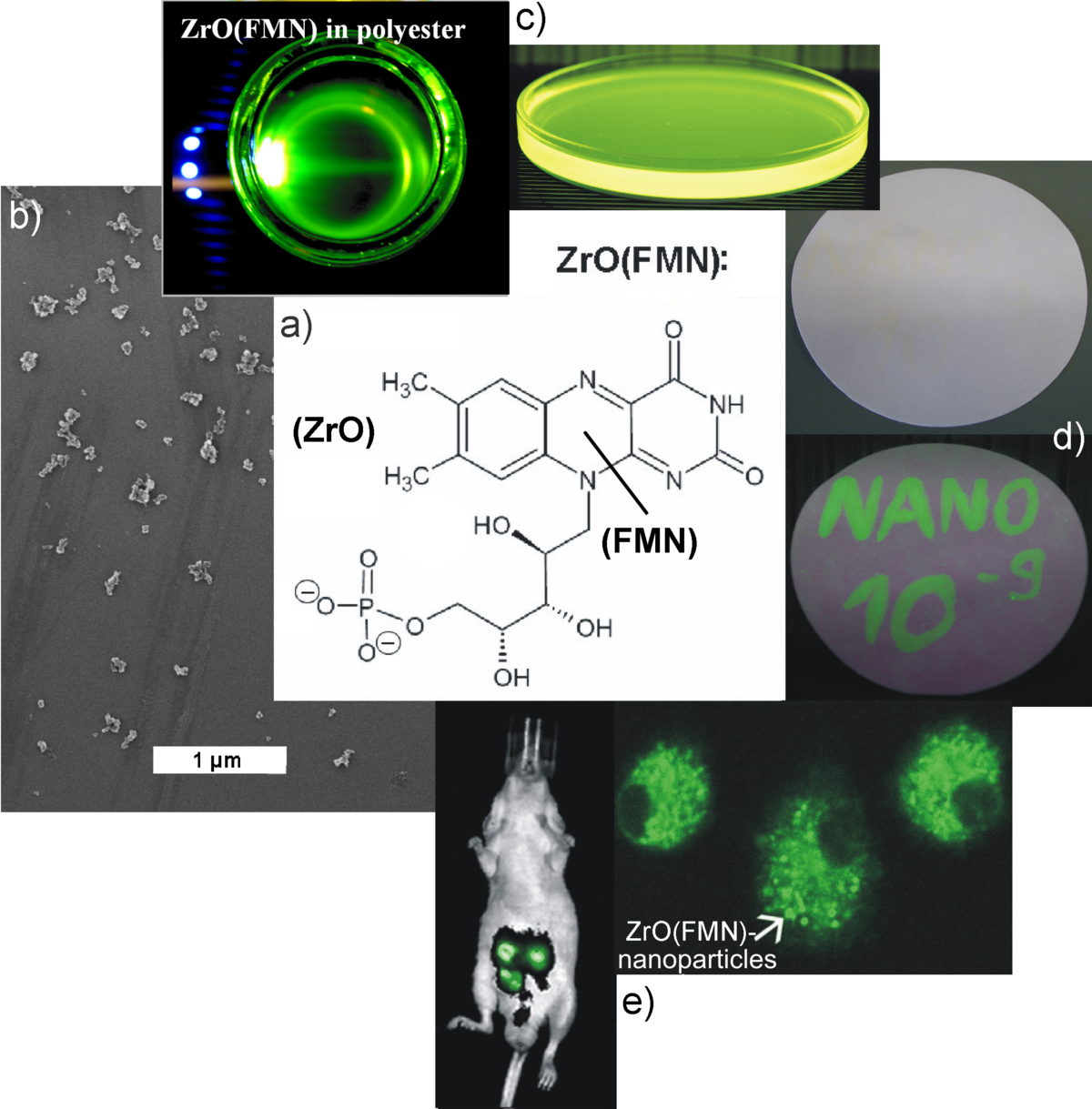C3.12: Nanoscale Luminescent Materials for Blue Excitation
Subproject Leader: Claus Feldmann
Institut für Anorganische Chemie, KIT
Contributing Scientists:
Present: Fabian Gyger, Andreas Luz
Past: Marcus Roming
a) composition with formal constituents (ZrO)2+ and (FMN)2–;
Why Luminescent Nanomaterials?
Nanoscale luminescent materials are highly requested for energy efficient lighting (e.g., white light LED, flat displays) as well as for all kinds of thin-film applications (e.g., labeling, advertising) by means of an incorporation in, or deposition on transparent substrates (e.g., polymers, glass). Moreover, luminescent nanomaterials are highly relevant to biomedical applications, including diagnostics and therapy of cancer, metastasis, arteriosclerosis or metabolic diseases. In subproject C3.12: Nanoscale Luminescent Materials, we aim at highly efficient luminescent nanomaterials, especially for excitation with blue light [1,2].
Rare-Earth-Doped Luminescent Nanomaterials
Multistep chemical synthesis and advanced strategies for crystallization and surface protection are typical prerequisites for obtaining rare-earth-doped nanomaterials with uniform size and high quantum yields. As an alternative approach, we have established the synthesis of, for instance, LaPO4:Ce,Tb and YVO4:Eu@YF3 in ionic liquids [3]. These solvents allow preparing luminescent nanomaterials with quantum yields up to 90 % and serve as an effective surface capping as well.
Luminescent Organic-Inorganic Hybrid Nanomaterials
The system ZrO(HPO4)1-x(FMN)x (x = 0 - 1) (FMN: flavin mononucleotide − a derivative of the well-known vitamin B2) has attracted our attention for several reasons [4]: (i) The very low solubility which facilitates nucleation and growth of nanoparticles; (ii) The chemical inertness of zirconium phosphates; (iii) The biocompatibility of all constituents; (iv) The dye concentration which can be tuned from very low contents (<1 mol%) up to molar quantities. Here, the composition ZrO(FMN) as a luminescent hybrid nanomaterial which is formally composed of an inorganic cation (ZrO2+) and an anionic fluorescent dye (FMN2–)introduced into polymers (e.g., polyester, thermoplastic starch) and encapsulated into cells.
References
| [1] | H. Goesmann, C. Feldmann, Nanoparticulate Functional Materials, Angew. Chem. Int. Ed. 2010, 49, 1362 (Review) |
| [2] | C. Feldmann, T. Jüstel, C. R.-Ronda, P. J. Schmidt,Inorganic Luminescent Materials – 100 Years of Research and Application, Adv. Funct. Mater. 2003, 13, 511 (Review) |
| [3] | G. Bühler, C. Feldmann, Microwave-assisted Synthesis of Luminescent LaPO4:Ce,Tb Nanocrystals in Ionic Liquids, Angew. Chem. Int. Ed. 2006, 45, 4864 |
| [4] | M. Roming, H. Lünsdorf, K. E. J. Dittmar, C. Feldmann, ZrO(HPO4)1-x(FMN)x: Quick and Easy Synthesis of a Nanoscale Luminescent Biomarker, Angew. Chem. Int. Ed. 2010, 49, 632. |
List of Publications 2006-2011 as PDF
Subproject Report 2006-2010 as PDF

